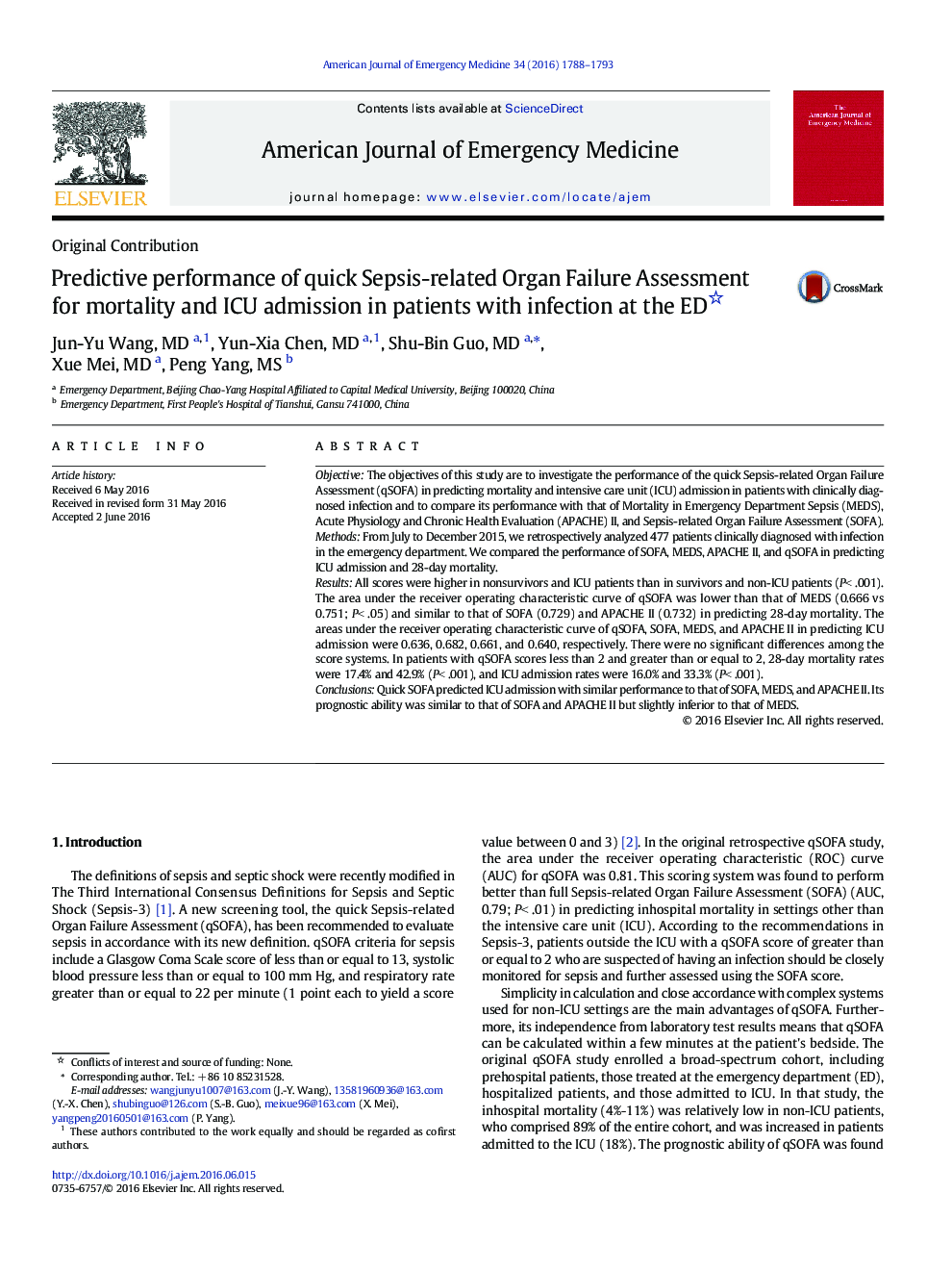| کد مقاله | کد نشریه | سال انتشار | مقاله انگلیسی | نسخه تمام متن |
|---|---|---|---|---|
| 3223025 | 1588090 | 2016 | 6 صفحه PDF | دانلود رایگان |
ObjectiveThe objectives of this study are to investigate the performance of the quick Sepsis-related Organ Failure Assessment (qSOFA) in predicting mortality and intensive care unit (ICU) admission in patients with clinically diagnosed infection and to compare its performance with that of Mortality in Emergency Department Sepsis (MEDS), Acute Physiology and Chronic Health Evaluation (APACHE) II, and Sepsis-related Organ Failure Assessment (SOFA).MethodsFrom July to December 2015, we retrospectively analyzed 477 patients clinically diagnosed with infection in the emergency department. We compared the performance of SOFA, MEDS, APACHE II, and qSOFA in predicting ICU admission and 28-day mortality.ResultsAll scores were higher in nonsurvivors and ICU patients than in survivors and non-ICU patients (P< .001). The area under the receiver operating characteristic curve of qSOFA was lower than that of MEDS (0.666 vs 0.751; P< .05) and similar to that of SOFA (0.729) and APACHE II (0.732) in predicting 28-day mortality. The areas under the receiver operating characteristic curve of qSOFA, SOFA, MEDS, and APACHE II in predicting ICU admission were 0.636, 0.682, 0.661, and 0.640, respectively. There were no significant differences among the score systems. In patients with qSOFA scores less than 2 and greater than or equal to 2, 28-day mortality rates were 17.4% and 42.9% (P< .001), and ICU admission rates were 16.0% and 33.3% (P< .001).ConclusionsQuick SOFA predicted ICU admission with similar performance to that of SOFA, MEDS, and APACHE II. Its prognostic ability was similar to that of SOFA and APACHE II but slightly inferior to that of MEDS.
Journal: The American Journal of Emergency Medicine - Volume 34, Issue 9, September 2016, Pages 1788–1793
